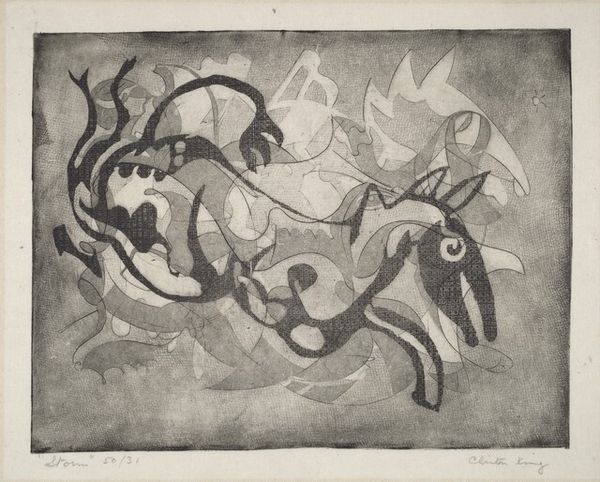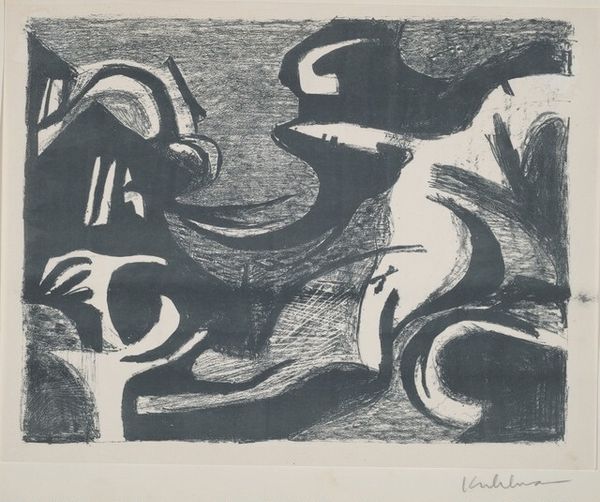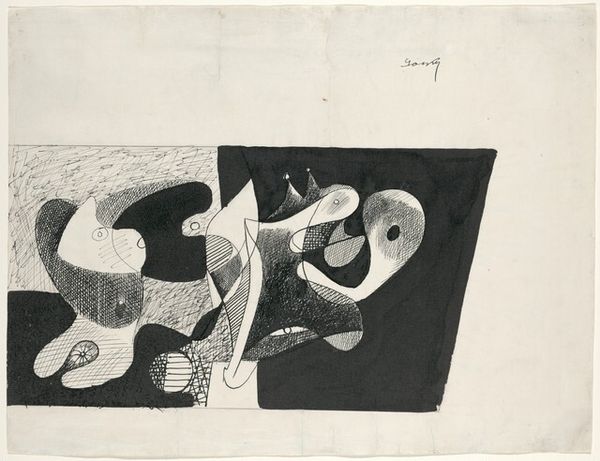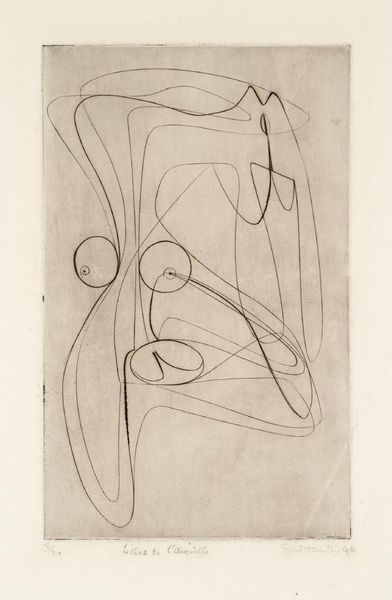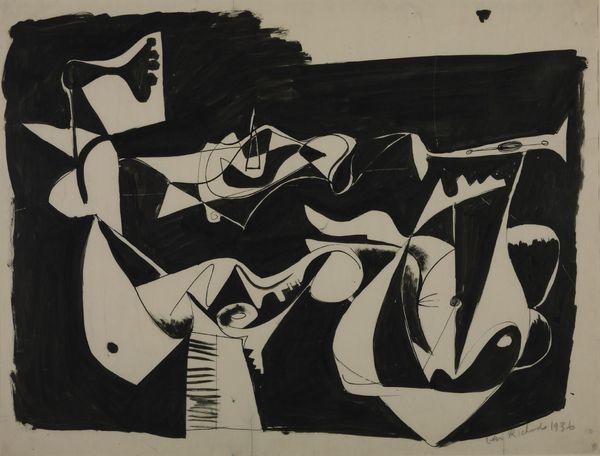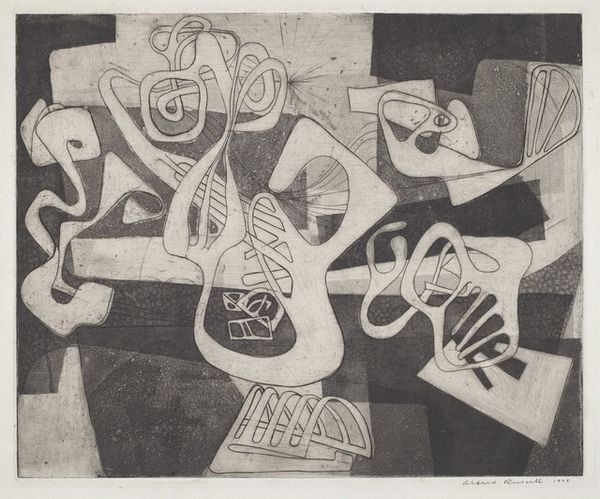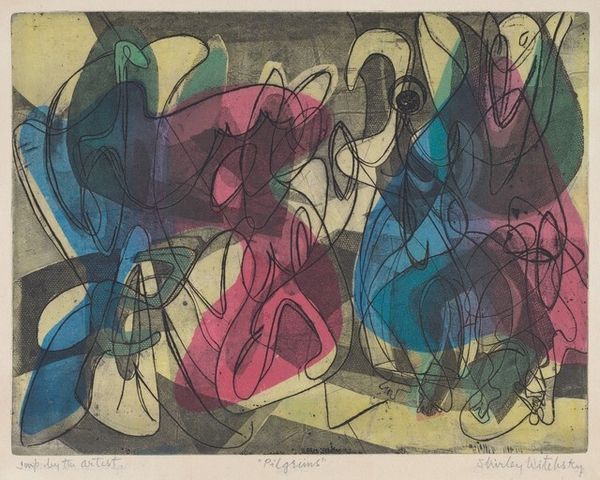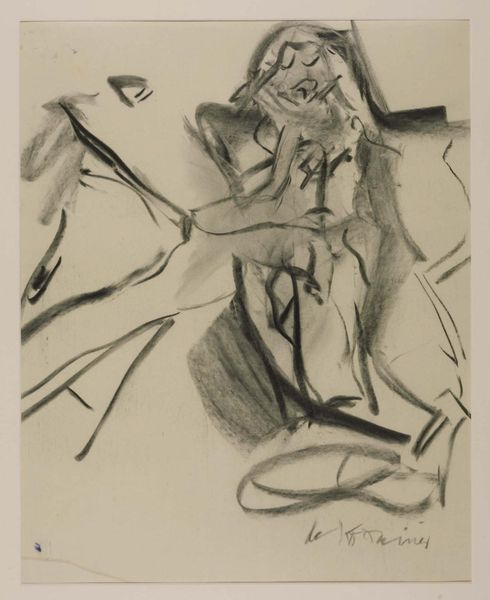
#
abstract-expressionism
# print
#
form
#
geometric
#
abstraction
#
line
Dimensions: plate: 153 x 195 mm sheet: 191 x 240 mm
Copyright: National Gallery of Art: CC0 1.0
Curator: Before us hangs “Scherzo,” a print by Rupert Kilgore, dating from the late 1940s. Editor: Well, immediately it strikes me as a dance. Or maybe the aftermath of one – chaotic lines intertwining, dark shapes contrasting with pale ones. Curator: Yes, Kilgore masterfully deploys line and form. Note the orchestration of geometric elements: circles, arcs, hard edges. See how the shapes interlock, creating tension and dynamism? The composition, while abstract, retains a sense of structured movement. Editor: Interesting you say that. My attention is caught by the medium itself: a print, likely an etching or aquatint, considering the texture of the blacks and the hazy plate tone that envelops these abstract figures. I can’t help but consider the process – the acid biting into the plate, the pressure of the press – that enabled Kilgore to realize this dance. And thinking about that repetitive act of pulling the print multiple times in those days! Curator: Quite. Yet, look at the use of positive and negative space! It's almost a dialogue in itself. The eye is drawn not only to what is there, but what isn’t. This strategic use of void underscores the work's sophisticated exploration of form. It really makes you question the signified versus the signifier in such a simplified image. Editor: Indeed! The inherent value, of the edition of 12 copies. Each has a mark, scratch, or variation; and maybe we'll never see all the different copies! The print process democratized image production in an incredible way. And this seemingly high abstraction by Kilgore then speaks to its own availability. Curator: I hadn't considered it that way, actually. What fascinating context! Thank you for enriching my perspective. Editor: Of course. Thinking about materials opens unexpected pathways. Perhaps Kilgore knew some workers that worked directly on his abstract intentions!
Comments
No comments
Be the first to comment and join the conversation on the ultimate creative platform.
